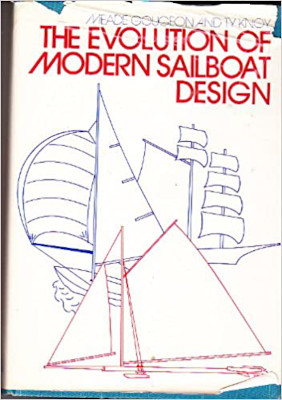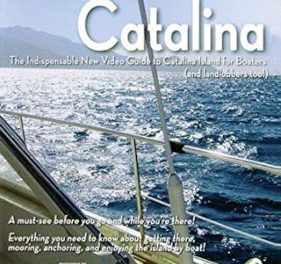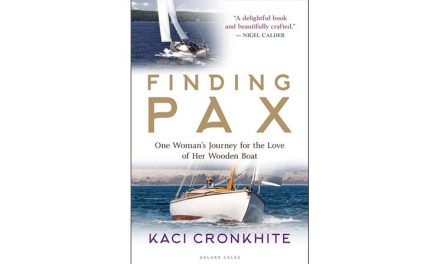How can a boat sail faster than the wind? What is the most efficient hull shape? Why does a tall, skinny Marconi point better than an old gaffer? The aptly titled Evolution of Modern Sailboat Design explains the economic forces and technical improvements that have shaped sailing vessels from the first Egyptian rafts to 19th century clipper ships to iceboats and experimental multihulls.
According to the authors, the most advanced modern designs are the result of the relentless quests to improve windward ability, increase speed, and lower costs of construction and operation. Smaller, quicker vessels have triumphed, making dinosaurs of large ships optimized for tradewind sailing or for hauling multiple decks of cannon. Modern design culminates in light boats capable of outsailing the wind, such as Marconi-rigged iceboats and experimental multihulls.
For example, the most efficient upwind sail, the ubiquitous Marconi, is the result of many inter-related innovations. The power-looms of the 19th century produced tightly woven sails, enabling greater precision of sail shape and eliminating a deficiency of earlier fore-and-aft rigs. Herrreshoff’s invention of sail track created a more efficient seal between the mast and sail and allowed for taller masts through spreaders and struts not possible when sails were rigged with mast hoops. Lessons learned through airplane design were applied to sail shape. Hollow masts — and later aluminum masts — combined with the elimination of extra spars reduced weight aloft. Lighter rigs reduced ballast and streamlined hulls. By the end of the 20th century, for the vast majority of boats, the Marconi improved to the point where its benefits outweighed those of all other rigs.
In looking to the future, the authors use iceboats and experimental multihulls to illustrate their predictions, which now may seem farfetched. After all, most of us still plod around with our single-spreader sloops and consider the vang or spinnaker (which the authors regard as an inefficient compromise) to be our most sophisticated aerodynamic tools. We are not, alas, skimming along on double-Marconi proas or shipping cargo on hydroplaning commercial sailing vessels. However, the discussion of experimental materials and designs does generate provocative concepts, and the reader will learn a great deal about the benefits and limitations of multihulls.
Writing 30 years ago, the authors blame racing rules for inhibiting innovation. Perhaps the true barrier today is the economics of the yachting industry, which forces mass production. The result is a lack of experimentation in new materials and the standardization of designs based on the all-around family cruiser or charter-fleet candidate. Perhaps a combination of easily customizable materials, such as epoxy and plywood or sheathed strip constructions and “mass-customizable” designs based on rapid prototyping and computer-controlled cutting, will shift the economics back to favoring one-off, local and experimental designs.





